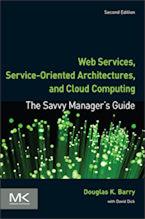Stanford Linear Accelerator (SLAC)
As of November, 2004, the Stanford Linear Accelerator Center (SLAC) stored over 895 terabytes of production data using Objectivity/DB. The production data is distributed across 100 on-line servers, using 2000 CPUs. SLAC uses Objectivity/DB for its flagship research project named B Factory, which includes the PEP II accelerator and the BaBar particle detector. The BaBar experiment -- a collaboration of 600 physicists from nine nations -- observes collisions between subatomic particles to understand how the behavior of matter and antimatter shaped our universe.
All BaBar data is stored in an Objectivity/DB database federation running in a heterogeneous environment comprised of Solaris and Linux platforms, using the C++ and Java languages. SLAC has collaborated with Objectivity Inc. to create the Objectivity Open File System, which provides a transparent interface between Objectivity/DB and SLAC's High Performance Storage System.
Click here for information on the BaBar project.
Click here for a paper on the BaBar database.
Context for Stanford Linear Accelerator (SLAC)
Related Articles for Stanford Linear Accelerator (SLAC)
Author
Douglas K Barry
Principal
You may use this material for your work or classes. Reprint Policy. Be sure to check the menu at the left for other articles available on this site.
The Savvy Manager's Guide
Douglas K Barry is also the author of a book that explains Web Services, service-oriented architecture, and Cloud Computing in an easy-to-understand, non-technical manner.
Web Services, Service-Oriented Architectures, and Cloud Computing: The Savvy Manager's Guide (Second Edition)
by Douglas K Barry with David Dick
This is a guide for the savvy manager who wants to capitalize on the wave of change that is occurring with Web Services, service-oriented architecture, and—more recently—Cloud Computing. The changes wrought by these technologies will require both a basic grasp of the technologies and an effective way to deal with how these changes will affect the people who build and use the systems in our organizations. This book covers both issues. Managers at all levels of all organizations must be aware of both the changes that we are now seeing and ways to deal with issues created by those changes.

